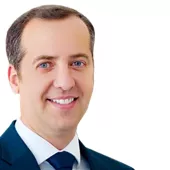Initial situation
This female patient has presented to the clinic with an upper denture (Fig. 1), presenting low stability and poor masticatory function. The esthetics was also a complaining, but the functional aspect was more crucial for her. After the clinical examination (Fig. 2-3) and CBCT analysis we planned six implants, all straight, in order to support a fixed full-arch bridge (Fig 4). The provisional bridge was produced prior to the implant placement. The surgical guide was printed to perform a static guided surgery.
Procedure
Treatment planning
Through Codiagnostix and we could see there was enough bone to place the implants (Fig. 5), apart off two regions that would need bone graft (Fig. 6). Six straight positioned implants were planned with an adequate cross-arch distribution to support the masticatory forces and avoid cantilevers (Fig. 7). The Straumann® BLX implants would be placed using a surgical guide (Fig. 8) and the provisional prosthesis would be screwed onto the implants just after the surgery, for an immediate loading protocol.


















































